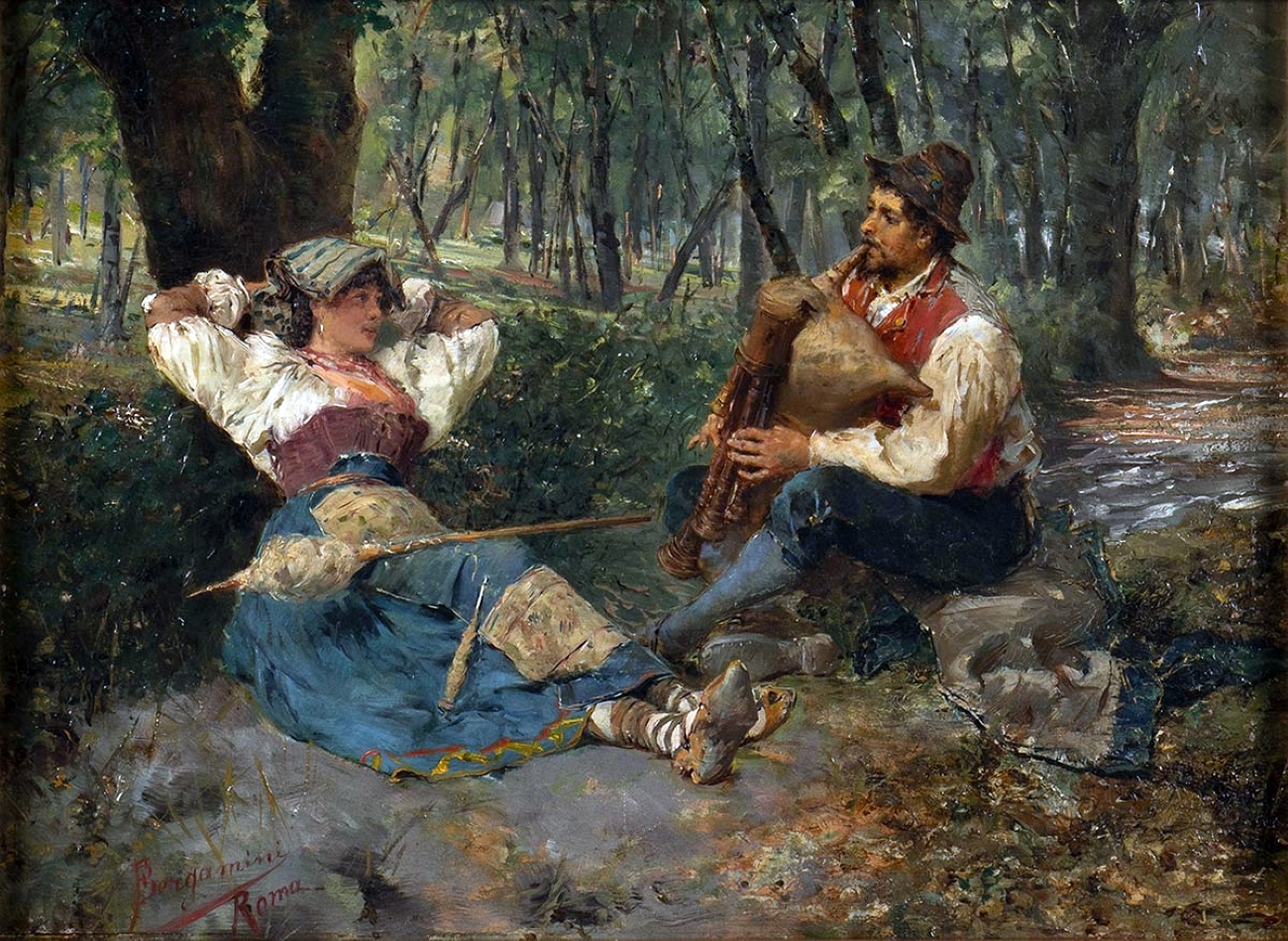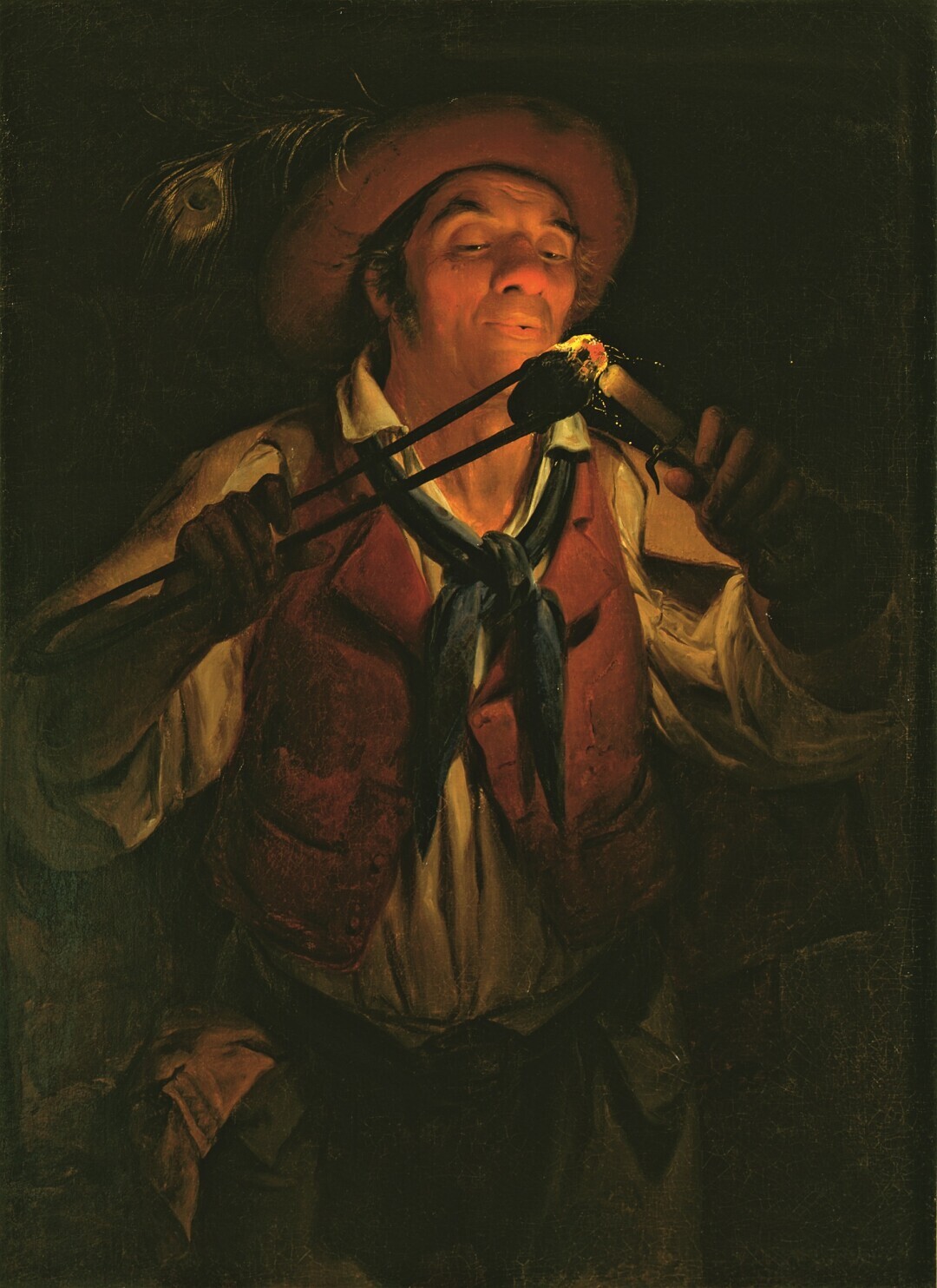Francesco Bergamini (Rome, 1851-1900) was an Italian artist who specialized in interior genre, portraits and religious motif painting.
He also received several commissions for portraits and frescoes.
He received his formal training at the Academy in Carrare under the direction of Alessandro Venanzi (1839-1916), an artist who specialized in religious and historical scenes as well as portraiture and frescos.














